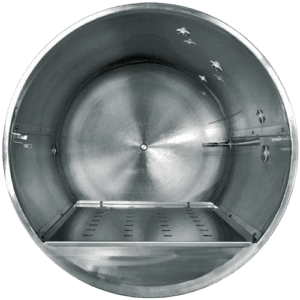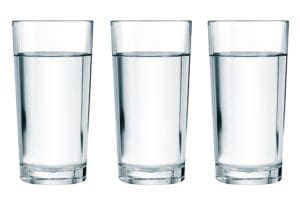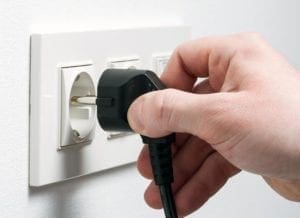Autoclave Energy Consumption & Water Requirements
Autoclaves sweat, stink, run up high utility bills, and break down often–most researchers and technicians treat these as unavoidable laboratory realities.
 But this doesn’t have to be the case. The rectangular-chambered autoclaves seen in most non-medical facilities are finicky, waste water, and run up huge power bills. But that’s because they’ve been optimized for medical applications, which generally demand extremely high throughput and short cycle times–at the cost of durability, reliability, and efficiency. If you aren’t processing flat trays of medical instruments for eight hours each day, every day, then you don’t need a rectangular-chamber autoclave–and don’t want one.
But this doesn’t have to be the case. The rectangular-chambered autoclaves seen in most non-medical facilities are finicky, waste water, and run up huge power bills. But that’s because they’ve been optimized for medical applications, which generally demand extremely high throughput and short cycle times–at the cost of durability, reliability, and efficiency. If you aren’t processing flat trays of medical instruments for eight hours each day, every day, then you don’t need a rectangular-chamber autoclave–and don’t want one.
On an annual basis, a cylindrical-vessel front-loading autoclave can be expected to use 1/6th to 1/10th as much water and energy as a comparable rectangular model, at a significantly reduced initial purchase price, with much lower ongoing maintenance costs.
Autoclave Water Requirements
 Rectangular-chambered autoclaves require an enormous amount of water under normal operating conditions. This is in large part due to the use of constant flow “bleeder valves” for cooling waste outflow–even though very few training, research, or industrial applications actually call for constant wastewater cooling.
Rectangular-chambered autoclaves require an enormous amount of water under normal operating conditions. This is in large part due to the use of constant flow “bleeder valves” for cooling waste outflow–even though very few training, research, or industrial applications actually call for constant wastewater cooling.
During a 2008 audit Stanford University found that they had 60 rectangular-chambered medical-grade autoclaves in research facilities throughout their Santa Clara County campus. Although they only operated these autoclaves during normal business hours, they were consuming just over 93,000 gallons of water per day–or 3 percent of the university’s entire daily water ration (as set by its General Use Permit from the county).
 As part of a 2016 audit the University of California, Riverside (UCR) found similar levels of waste. In 2015 they began automated utility usage tracking on two of their 37 high-grade rectangle-chambered autoclaves. Those two autoclaves alone consumed a total of 654 gallons of water each day, with no correlation between how many cycles were run and how much water was consumed. In one notable 39 day period that pair of autoclaves used almost 16,000 gallons of water, even though not a single cycle was run on either of them. [source https://chesc.org/wp-content/uploads/UCR-Autoclave-study-2016-PROCUREMENT-DF.pdf ]
As part of a 2016 audit the University of California, Riverside (UCR) found similar levels of waste. In 2015 they began automated utility usage tracking on two of their 37 high-grade rectangle-chambered autoclaves. Those two autoclaves alone consumed a total of 654 gallons of water each day, with no correlation between how many cycles were run and how much water was consumed. In one notable 39 day period that pair of autoclaves used almost 16,000 gallons of water, even though not a single cycle was run on either of them. [source https://chesc.org/wp-content/uploads/UCR-Autoclave-study-2016-PROCUREMENT-DF.pdf ]
Compare this water consumption to Priorclave North America’s cylindrical-chambered autoclaves. A comparable Priorclave autoclave installed alongside UCR’s existing rectangular units used just four gallons of water per cycle, and used no water while sitting idle. (For a full explanation as to how and why cylindrical autoclaves drastically outperform rectangular-chambered autoclaves in research labs, download our full “Autoclave Water Requirements and Consumption” whitepaper.)
Autoclave Energy Consumption
 As part of that same 2016 audit, UCR also tracked energy consumption. Here there was a much clearer correlation between cycles run and autoclave energy consumption. Their existing rectangular autoclaves varied from 11 Kwh/day (when the units sat idle) to 222 Kwh/day (during high-usage periods). On average, their rectangular-chambered autoclaves used around 84 Kwh/day. By comparison, UCR’s cylindrical research-grade Priorclave autoclave averaged just 15.k Kwh/day. (For details on how chamber shape drives autoclave power consumption, please download our full “Autoclave Energy Consumption” whitepaper.)
As part of that same 2016 audit, UCR also tracked energy consumption. Here there was a much clearer correlation between cycles run and autoclave energy consumption. Their existing rectangular autoclaves varied from 11 Kwh/day (when the units sat idle) to 222 Kwh/day (during high-usage periods). On average, their rectangular-chambered autoclaves used around 84 Kwh/day. By comparison, UCR’s cylindrical research-grade Priorclave autoclave averaged just 15.k Kwh/day. (For details on how chamber shape drives autoclave power consumption, please download our full “Autoclave Energy Consumption” whitepaper.)


